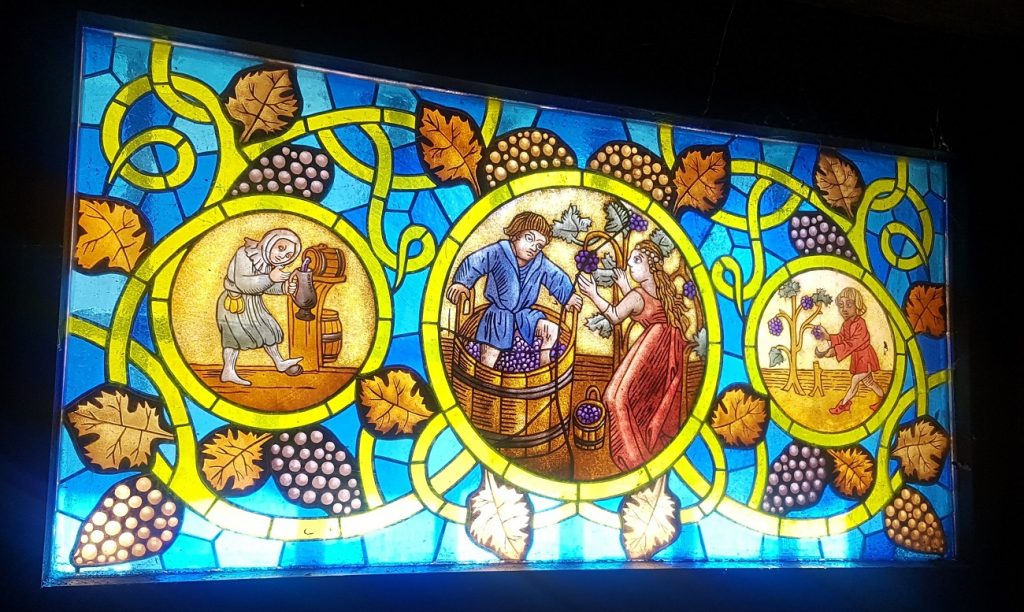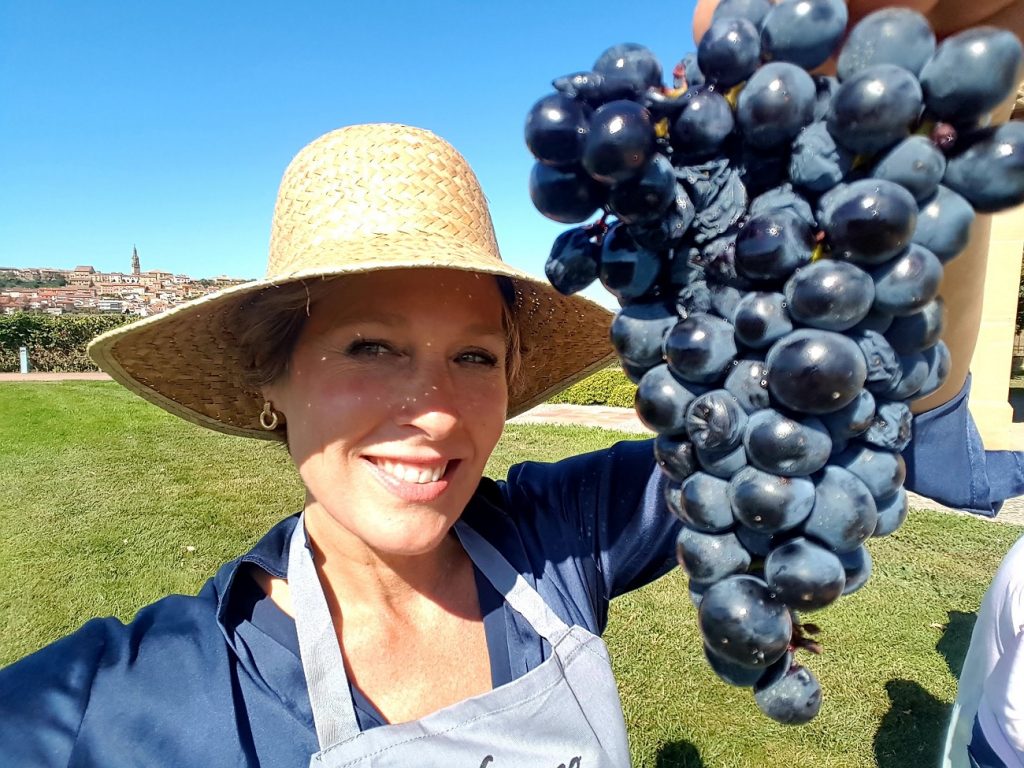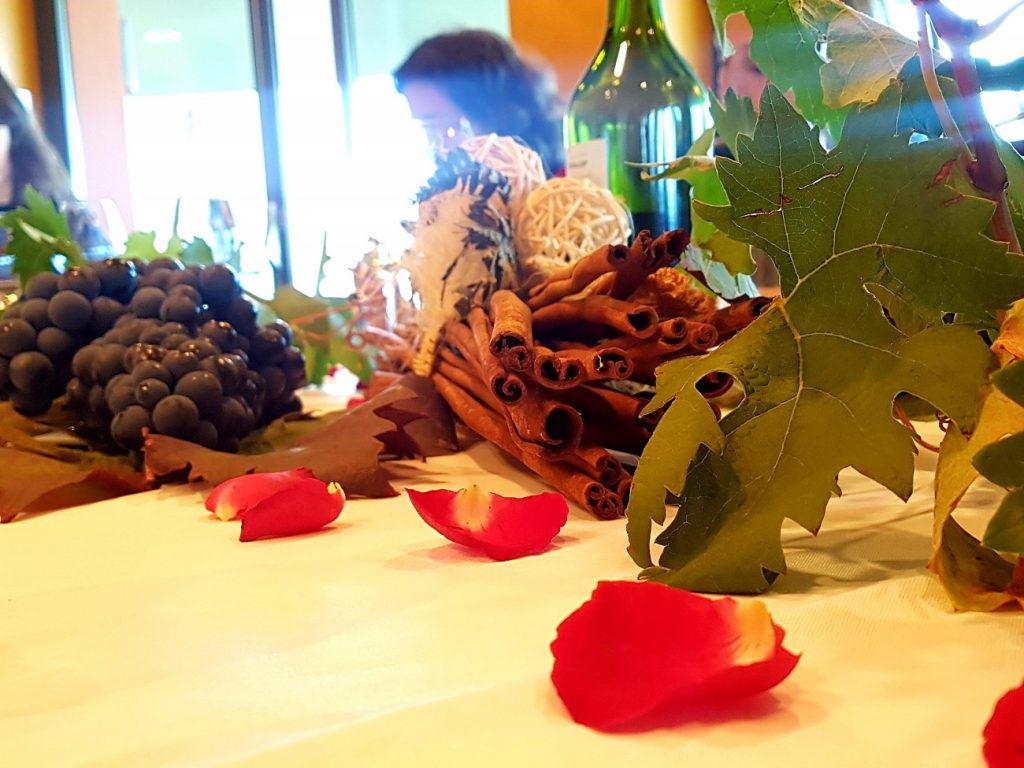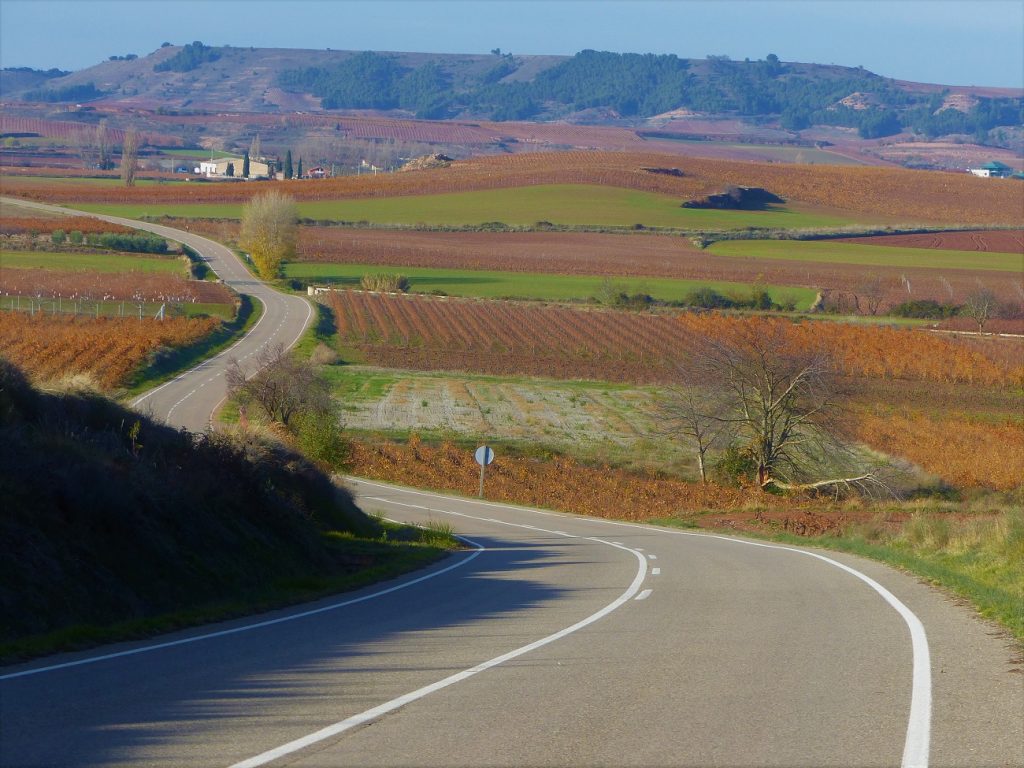Logroño is a stately wine-country town with a heart of tree-studded squares, narrow streets and hidden corners. Logroño is the capital of La Rioja and thus at the heart of this beautiful region. With an endless selection of pincho bars, Logroño has a culinary reputation that surpasses other big-name cities in Spain. The Ebro River and the famous pilgrimage of the Camino de Santiago both traverse Logroño, making it a commercial, spiritual and cultural crossroads. In September the festival of San Mateo, also known as the Grape Harvest Festival, attracts revelers from all over Spain and the world who come to enjoy traditions and events that go back centuries.
Logroño is about an hour’s drive south and slightly west from Pamplona, and halfway between there and Burgos, a city further along the Camino de Santiago. It also just about an hour away from Vitoria which flanks the Rioja Alavesa wine region.

Nestled on the banks of the Ebro River, with rolling hills of vineyards stretching out beyond it, Logroño is a beautiful town in an agricultural haven. With a population of just over 150,000, it feels intimate and accessible. It has lush parks, such as the Ebro Park by the river with views of the 13th century citadel.
Thought to have been settled as far back as the Celtic-Iberian times, and certainly pre-Roman, this spot on the Ebro was much sought after through history. The Arabs also left their legacy on the settlement before it moved into the medieval era. In the Middle Ages, Logroño was (and is again now) a very important stop on the Camino de Santiago. It filled up with monasteries and churches, which in turn housed most the region’s cultural wealth. From about the 10th century possession of Logroño passed between the kings of Navarra and Castile. Logroño was mostly loyal to Castile, however, and suffered a great ransacking for it by the Navarrans in 1092. The area was finally annexed to Castile by the end of the 11th century.
In the early 17th century, the brutal and uncompromising Spanish Inquisition began. In 1609 and 1610, Logroño was the backdrop for the Basque witch trials. Women, but also men and children, were dragged down from the north by the thousands to be tried for witchcraft. The villagers were often forced to confess, under torture, but usually retracted their confessions later. Unfortunately, many people lost their lives burning at the stake for the belief that they could fly, cast spells on people they didn’t like, and cause disease and death. Some of the women were merely herbalists and medicine women, using ancient knowledge to care for their families.

In the modern period, Logroño is marked by the revolution in the wine industry. French settlers moved into the area, bringing their grapes with them to cultivate. The area developed over the last couple hundred years into one of the most important wine regions in the world.
Join us on one of our Walking Tours, like the Camino de Santiago Journey

The Cathedral of Santa Maria de la Redonda is one of the main attractions in Logroño. It sits on the site of an older Romanesque oratory. It has a circular floor plan, thus its name, ‘Redonda’. Construction began in the 16th century and finished in the 18th century. It has two towers, known as The Twins, which are Baroque in style and despite efforts to dissuade them, are crowned with giant stork nests full of storks. The rest of the building is gothic style.
The Museo de la Rioja is in a pretty 18th century building. It covers the entire span of history including some pre-historic artifacts such as arrow heads. It continues up through the pre-Roman era to the Roman era, the Middle Ages and into modern day. It has collections of swords and spears and Roman coins. It also houses the 14th century San Millán tablets, from the alter of the famous San Millán monastery, Suso. They depict scenes in gothic style of Jesus and Mary’s life as well as that of San Millán (Saint Emilius). (Incidentally, this monastery is considered the birthplace of the Spanish language.)

The oldest church in Logroño is the Church of San Bartolomé, from the 12th century. It has a gorgeous and intricate stone carving façade. It also has a bell tower which was originally built as a part of the old city wall. Originally used for defensive purposes, today visitors can climb to the top for fantastic views of the city.
Finally, the Puente de Piedra, or Stone Bridge, spans the Ebro River. It is highly recognizable as the entrance way to the city along the Camino De Santiago. It has seven arcs and dates back to the 19th century.
This question is almost silly, because there is one main activity that people come from all over the world to do in this area, and that is wine tasting. The Franco-Españolas winery on the edge of Logroño is not to be missed. With private tastings available, after the tour, they take you back to play wine tasting games and sample a huge array of insanely good wines.
Join us on an exquisite journey to private wineries, like Franco Españolas
The Marques de Murrieta winery is right by town as well and features one of the most famous of all Rioja wines with tours through their gorgeous buildings and grounds.
There are fewer monuments here, but perhaps more importantly to some, there is a great selection of pinchos (note, this is the Spanish spelling of the Basque pintxo) bars. In fact, Logroño is quickly gaining a culinary reputation to rival anywhere in Spain.

Calle Laurel is the street and area to go for a pincho crawl. Located the Old Quarter, or Casco Viejo, not far from the Cathedral, it consists of more than one street, with many parallel streets and small alleys. It is absolutely covered in small bar/restaurants serving up the most amazing food and wine imaginable. It is perfect for pincho-hopping to the heart’s delight.
Calle San Juan is a street also in the Casco Viejo that attracts more of the local expert wine drinkers. The layout is similar to Calle Laurel, with twenty or so bars and restaurants on both sides of the street where the crowds gather mostly on weekends for the traditional pincho and wine aperitif.
Beitia is a very busy, off-the-beaten-track bar and terrace with a great atmosphere. Beitia specializes in typical Riojan shared dishes – garlic soup, snails, deep-fried sheep’s intestines, lamb’s livers, potatoes with spicy sausage to name a few.

Wine Fandango run by the Arambarri brothers is a stylish and popular restaurant and wine bar. The brothers are also the owners of the Vintae wine group. Here you will find the three main elements of a great wine bar: wine, gastronomy and lots of fun.
The Taberna Herrerías is just opposite from the Church San Bertolomé in a beautiful 16th century palace, a wonderful backdrop to any fine wine drinking.
On the Calle María Teresa Gil de Gárate, a newly renovated area of old industrial sites on the edge of town, there is a bustling row of businesses. Closed to traffic, it’s easy to stroll around for a couple glasses of wine and pinchos. Stop at La Carbonera, located in an old coal warehouse, featuring one of the best selections of wine by the glass in Logroño.

Join us into the Rioja Region deep into the culture and traditions, off the beaten path to places only a local would know, to its multiple festivities and events. While providing you with luxury comfort, unforgettable food and wine, and exquisite care, we offer walking and cycling journeys in La Rioja.
Walking and Wine in the Wine Region Tour

La Rioja to the Basque Coast Road Bike Tour

This street is the street and area to go for a pincho crawl. Located the Old Quarter, or Casco Viejo, not far from the Cathedral, it consists of more than one street, with many parallel streets and small alleys. It is absolutely covered in small bar/restaurants serving up the most amazing food and wine imaginable. It is perfect for pincho-hopping to the heart’s delight.
This is a street also in the Casco Viejo that attracts more of the local expert wine drinkers. The layout is similar to Calle Laurel, with twenty or so bars and restaurants on both sides of the street where the crowds gather mostly on weekends for the traditional pincho and wine aperitif.
This is a very busy, off-the-beaten-track bar and terrace with a great atmosphere. Beitia specializes in typical Riojan shared dishes – garlic soup, snails, deep-fried sheep’s intestines, lamb’s livers, potatoes with spicy sausage to name a few.
This restaurant is run by the Arambarri brothers is a stylish and popular restaurant and wine bar. The brothers are also the owners of the Vintae wine group. Here you will find the three main elements of a great wine bar: wine, gastronomy and lots of fun.
The Taberna Herrerías is just opposite from the Church San Bertolomé in a beautiful 16th century palace, a wonderful backdrop to any fine wine drinking.
On the Calle María Teresa Gil de Gárate, a newly renovated area of old industrial sites on the edge of town, there is a bustling row of businesses. Closed to traffic, it’s easy to stroll around for a couple glasses of wine and pinchos. Stop at La Carbonera, located in an old coal warehouse, featuring one of the best selections of wine by the glass in Logroño.